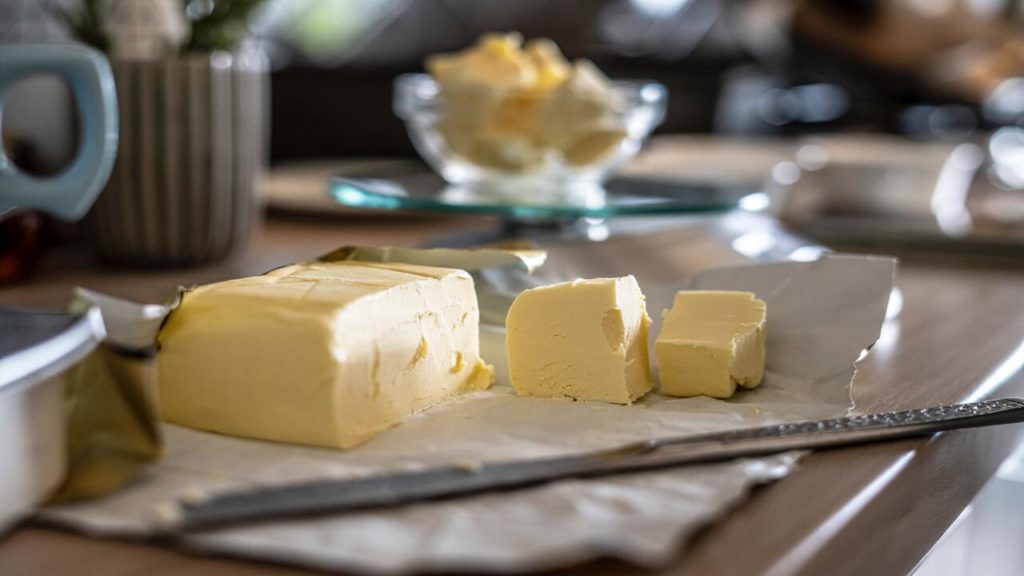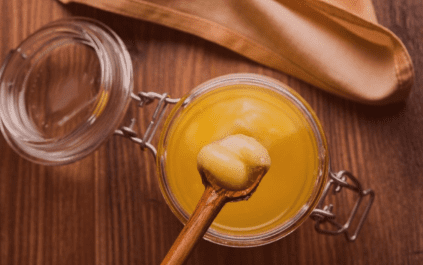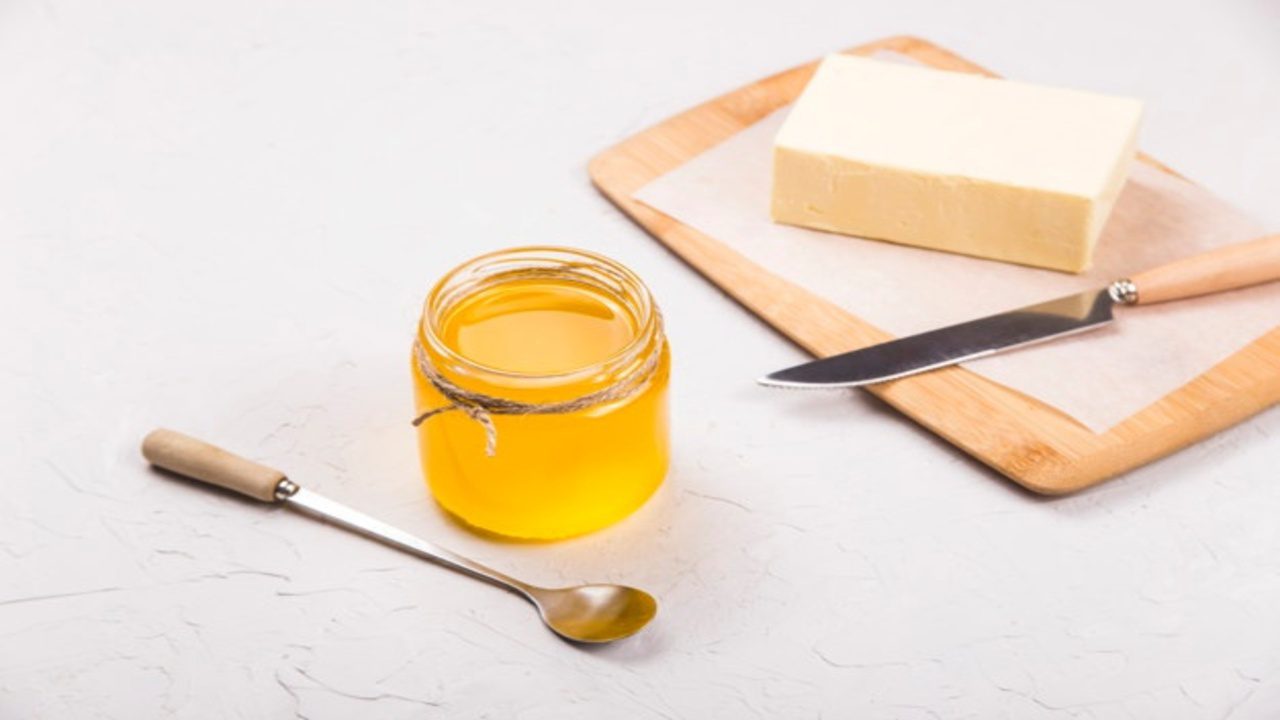What’s The Difference Between Regular Butter, Ghee, And Clarified Butter? Butter is a staple ingredient found in kitchens all around the globe, transcending cultures and cuisines. It plays an integral role in our daily lives, accompanying us from the moment we rise in the morning to the very last meal of the day. Can you truly imagine a life without it? Picture this: a freshly baked French baguette, a warm muffin, or a flaky croissant emerging from the oven, their enticing aromas wafting through the air. The instinct to slather butter on that bread or muffin is almost irresistible, and with the croissant, which is itself a delightful creation made from layers of dough rolled in butter, the temptation is even greater.
But what if your dietary restrictions prevent you from enjoying butter? Brace yourself for the realization that this beloved ingredient is often hidden in many recipes, enhancing flavors and textures in ways that are sometimes unexpected. Take, for instance, a perfectly cooked medium or rare steak, glistening with a mouth-watering sheen. That delectable shine is the result of melted butter, often infused with aromatic herbs like garlic, thyme, or rosemary, transforming the dish into what is known as “butter-basted steak.”
Butter’s versatility extends far beyond just meats. It is a key player in sautéing vegetables or seafood, frying eggs to golden perfection, and crafting fluffy omelets. It is also essential in preparing a variety of dishes, including rice, stir-fries, and roast meats, as well as in baking flavored breads that fill the kitchen with warmth and comfort.
Interestingly, not all butter is created equal. Some recipes may call for regular butter, while others might specify clarified butter or ghee, particularly in Indian cuisine. Each type has its unique properties and flavor profiles, which can significantly impact the final dish. Regular butter contains milk solids and water, while clarified butter has had the milk solids removed, resulting in a higher smoke point and a more concentrated flavor. Ghee, on the other hand, is a type of clarified butter that has been simmered longer to develop a nutty aroma and taste.
So, the next time you find yourself reaching for that tub of butter, take a moment to consider which type will best complement your recipe. Whether you choose regular butter for its creamy richness, clarified butter for its high heat tolerance, or ghee for its distinctive flavor, you are sure to elevate your culinary creations and enjoy the delicious results that butter can bring to your table.
Without butter, there’s no reason to come to France.
Paul Bocuse – French chef
Jump To Section
- What is Regular Butter?
- What Is Ghee, And What Is Its Origin?
- What Is The Role Of Clarified Butter in Culinary?
What Is Regular Butter?

Butter is a rich and versatile dairy product that is created through the process of churning whipped cream until the fat molecules coalesce and form a stable emulsion. This transformation occurs as the mechanical action of churning disrupts the structure of the cream, allowing the fat globules to clump together and separate from the liquid whey. The resulting product is a creamy, smooth substance that is beloved in kitchens around the world.
In terms of its composition, butter is primarily made up of milk fat, which constitutes approximately 82% of its total content. This high-fat content is what gives butter its characteristic richness and flavor. Additionally, butter contains about 16% water, which is primarily in the form of whey, and around 2% milk solids, which include proteins such as casein. These components contribute to the overall texture and taste of butter, making it a staple ingredient in many culinary applications.
To enhance its flavor and extend its shelf life, salt is often added to butter, although this is optional. The addition of salt not only improves the taste but also acts as a preservative, helping to inhibit the growth of bacteria and mold, thereby allowing the butter to be stored for longer periods without spoiling.
Butter’s culinary uses are extensive and varied. It is commonly employed in the preparation of a wide range of dishes, including pasta, pies, and an array of sweet treats such as cookies and cakes. In addition to baking, butter is frequently used for finishing sauces, where it serves to thicken the mixture and impart a glossy sheen. This technique, known as “monter au beurre,” is particularly popular in French cuisine, where the addition of cold butter at the end of cooking enriches the sauce and enhances its flavor profile.
Moreover, butter is often used in cooking meats, where it can be melted and brushed over proteins to add depth of flavor and a beautiful, appetizing shine. Its ability to enhance the taste of both savory and sweet dishes makes butter an indispensable ingredient in many culinary traditions around the globe. Whether used as a cooking fat, a flavor enhancer, or a key component in baked goods, butter remains a beloved staple that continues to play a vital role in the art of cooking.
What Is Ghee, And What Is Its Origin?

Ghee is butter that has been clarified to remove milk solids and water, leaving a composition of around 99-100% pure fat.
Ghee is a unique and versatile type of clarified butter that holds a special place in culinary traditions, particularly within Indian cuisine. Its origins can be traced back to ancient times, where it was developed as a means to extend the shelf life of butter, making it a practical choice for households without refrigeration. Remarkably, ghee can last for up to six months when stored properly, while regular butter typically has a much shorter shelf life of about three weeks after being opened. This extended longevity makes ghee not only a staple in many kitchens but also a valuable ingredient in various culinary practices.
In addition to its culinary uses, ghee is also an integral component of Ayurveda, the traditional system of medicine that originated in India. In Ayurvedic practices, ghee is revered for its numerous health benefits and is often used as a base for medicinal preparations. It is believed to promote digestion, enhance nutrient absorption, and provide a source of healthy fats that support overall well-being.
The process of making ghee begins similarly to that of clarified butter, where butter is heated to separate the milk solids from the fat. However, the key difference lies in the cooking time; ghee is cooked longer, allowing the milk solids to caramelize and impart a rich, nutty flavor to the final product. This additional cooking not only enhances the taste but also contributes to the unique aroma that ghee is known for.
In the culinary world, ghee is incredibly versatile and can be used in place of regular butter or cooking oil in a wide range of dishes. It is particularly well-suited for preparing stews, sautéing vegetables, and cooking meats, making it a valuable ingredient beyond just Indian recipes. One of the standout features of ghee is its high smoke point, which is significantly higher than that of regular butter. This means that ghee can withstand higher cooking temperatures without burning, making it an excellent choice for frying and sautéing.
Moreover, ghee serves as a suitable alternative for individuals who are lactose intolerant. During the clarification process, the milk solids, which contain lactose and casein, are removed, resulting in a product that is free from these components. This makes ghee a safe and delicious option for those who may have difficulty digesting traditional dairy products.
In summary, ghee is not just a type of clarified butter; it is a culinary treasure with a rich history and a multitude of uses. Its long shelf life, health benefits, and versatility in cooking make it a beloved ingredient in kitchens around the world, particularly in Indian cuisine, where it continues to play a vital role in both cooking and traditional medicine.
What Is The Role Of Clarified Butter in Culinary?
Clarified butter is a culinary gem that undergoes a meticulous process to remove its water content and milk proteins, resulting in a composition that is 99-100% pure butterfat. This transformation not only enhances its flavor but also significantly increases its cooking capabilities. One of the standout features of clarified butter is its elevated “smoke point,” which is notably higher than that of regular butter. While regular butter has a smoke point of around 350°F (175°C), clarified butter can be heated to an impressive maximum of 450°F (232°C). This characteristic makes it an exceptional choice for high-heat cooking methods, such as sautéing, frying, and searing, without the risk of burning, much like ghee.
When you use clarified butter for cooking, it imparts a delightful nutty flavor to your dishes, along with a velvety and creamy texture that enhances the overall eating experience. This makes it particularly ideal for sautéing a variety of ingredients, including vegetables, seafood, meats, and even pasta. The ability to withstand higher temperatures allows chefs and home cooks alike to achieve perfect caramelization and browning, which are essential for developing rich flavors in many recipes.
In addition to its superior cooking properties, clarified butter boasts a longer shelf life compared to regular butter. It can be conveniently stored at room temperature for several weeks, in the refrigerator for up to six months, or even frozen for years without compromising its quality. This makes it a practical staple in any kitchen, allowing for easy access to a versatile cooking fat.
The process of preparing clarified butter is straightforward yet rewarding. To begin, melt unsalted butter over low heat in a saucepan. As the butter melts, it will begin to foam as the water content evaporates. During this process, white particles of milk solids will form and settle at the bottom of the pan. Once you notice this accumulation, you can carefully strain the contents through a fine sieve or a cheesecloth-lined strainer into a separate container. Alternatively, you can use a ladle or spoon to scoop out the clarified butter, discarding the foamy water and the milk solids that have settled at the bottom. The removal of these milk solids is crucial, as they are primarily responsible for the burning that can occur when cooking at high temperatures. What remains is the pure clarified butter, ready to elevate your culinary creations.
Typically, from 454 grams of regular butter, you can expect to yield approximately 340 grams of clarified butter. This makes it a valuable ingredient in the kitchen, as it can be used in a wide array of dishes. Like ghee, clarified butter is incredibly versatile and can be employed in preparing French toast, sautéing meats or vegetables, mixing into popcorn for a rich flavor, or crafting fluffy omelets. It is also particularly well-suited for recipes that require a significant amount of butterfat, such as the classic Hollandaise sauce, where its rich, buttery flavor can truly shine.
In summary, clarified butter is not just a cooking fat; it is a transformative ingredient that enhances the flavor and texture of a multitude of dishes while offering practical benefits in terms of storage and cooking versatility. Whether you are a seasoned chef or a home cook, incorporating clarified butter into your culinary repertoire can elevate your cooking to new heights.
Bottom Line
Butter is a key ingredient in countless pastry and savory dishes around the globe. By clarifying butter and eliminating the milk solids, you are left with the rich golden fat, ideal for frying, sautéing, and creating sauces like hollandaise. Both clarified butter and ghee boast a longer shelf life than traditional butter. Additionally, they impart a delightful nutty flavor and a creamy, velvety texture to various dishes.
Did you make this recipe?
I hope this article has enriched your knowledge of cooking. To learn more take a look at What Is Roux? Learn How To Make The Basic Ingredient Of French Cuisine
Please let me know how it turned out for you! Leave a comment below and share our content. Help our community grow by following our social media on Spotify, Instagram, Facebook, YouTube, and TikTok, and stay up to date with the news from the world of Gastronomy.
Don’t forget to tag @gastrovinoacademy on Instagram and hashtag it #gastrovinoacademy.
Cheers🍷



Hi! This is kind of off topic but I need some help from an established blog. Is it hard to set up your own blog? I’m not very techincal but I can figure things out pretty fast. I’m thinking about creating my own but I’m not sure where to start. Do you have any ideas or suggestions? Many thanks